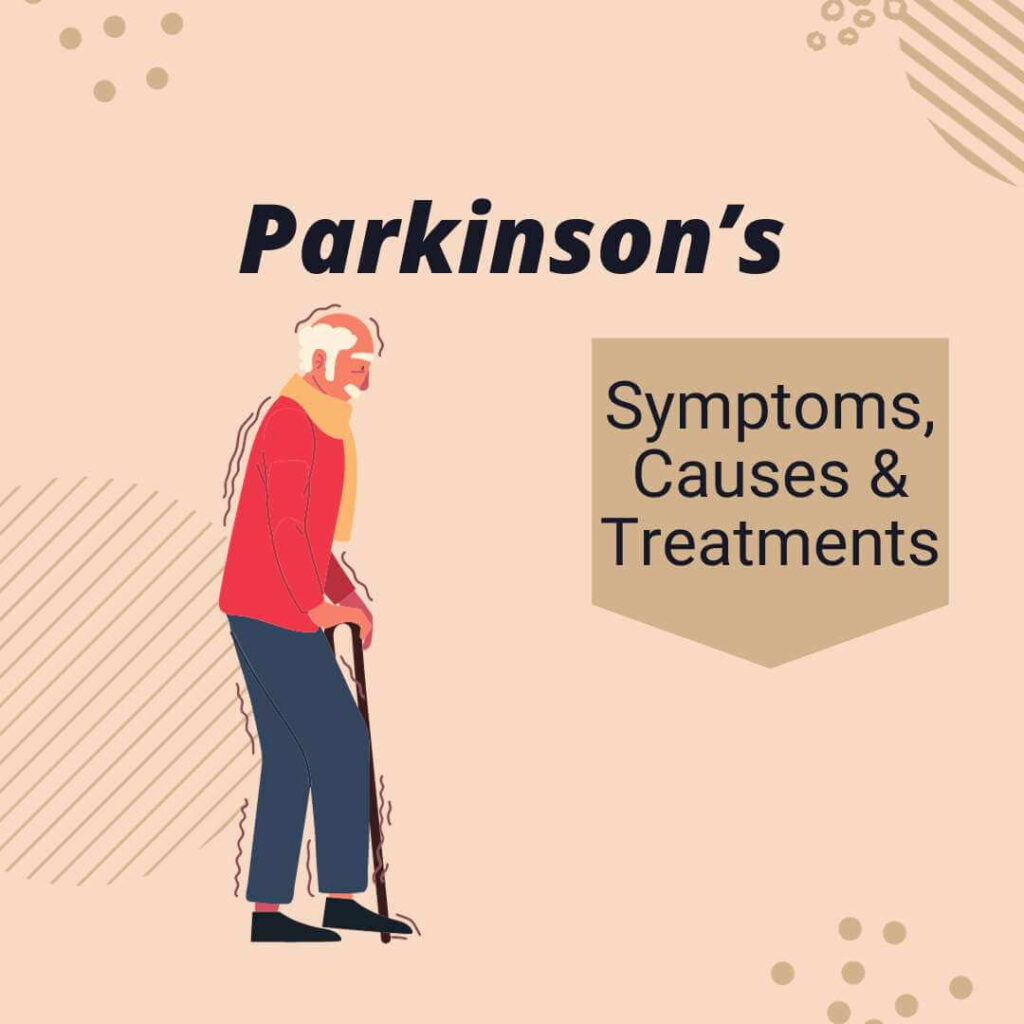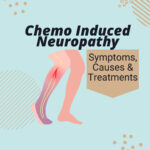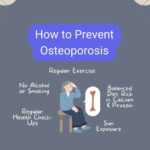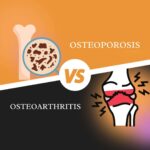Are you or a loved one experiencing unusual motor symptoms, such as tremors and stiffness? These symptoms may indicate Parkinson’s Disease (PD), a neurological disorder that primarily affects the elderly population.

Key Takeaways
- Parkinson’s Disease primarily affects elderly individuals and is characterized by symptoms such as tremors, slowed movement, difficulty swallowing, speech issues, memory loss, and depression.
- The exact causes of Parkinson’s Disease in the elderly are still unknown, but factors like age-related changes, genetic predisposition, environmental factors, and neurodegenerative changes contribute to its development.
- Treatment for Parkinson’s Disease in the elderly typically involves a combination of medications (such as levodopa and dopamine agonists), surgeries (like deep brain stimulation), and symptom management techniques (including physical therapy and lifestyle modifications).
- Early diagnosis is crucial for effective management of Parkinson’s Disease in older adults.
Symptoms of Parkinson’s Disease
To learn about the early symptoms that indicate whether you may get Parkinson’s, read our blog 5 signs you’ll get Parkinson’s. These symptoms will help you seek early medical advice, to slow down the progression of the disease as fast as possible.
Once the disease matures, patients will show the following symptoms:
Tremors
Tremors often show up first in one hand. This is a key sign of Parkinson’s disease. Sometimes the shaking can spread to other parts of your body. The shaking mostly happens when your body is at rest.
It can make normal tasks hard to do, like eating or writing, but there are ways to deal with them.
Slowed movement
Parkinson’s disease can cause your movements to slow down. This is called bradykinesia. You might begin to walk slowly or drag your feet as you move around. Simple tasks like getting dressed become hard.
Your face may not show much emotion, this is because of the slowing in facial motion. Over time, some people may also notice a drop-in mental skill and reaction speed. This is all part of Parkinson’s disease causing stiff muscles and slower movement.
Many patients also experience orthostatic hypotension, which is a form lightheadedness caused by sudden drop of blood pressure.
Difficulty swallowing
Parkinson’s disease can make swallowing hard. This problem is called dysphagia. It does not happen only in late stages of the disease. It can come at any time. Dysphagia may cause other health problems too, like less eating and drinking or breathing food into lungs, known as aspiration pneumonia.
The root issue behind it is loss of control over mouth and throat muscles due to lower dopamine levels in the brain cells that manage these nerve cells.
Speech issues
Speech issues are a common symptom of Parkinson’s disease in the elderly. Many people with Parkinson’s experience problems with their voice and speech, such as speaking softly, having a monotone or breathy voice, and difficulty saying letters or words.
Speech therapy can help improve communication abilities for individuals with Parkinson’s disease.
It is important to address these speech issues to maintain effective communication skills and quality of life.
Memory loss
Memory loss is a common problem that older adults with Parkinson’s disease may experience. It can affect their ability to remember things like names, dates, and appointments. This happens because Parkinson’s disease affects the brain cells responsible for storing and retrieving memories.
As a result, individuals may have difficulties remembering recent events or recalling information they previously knew. In some cases, Parkinson’s disease can even lead to more severe memory problems, known as dementia.
It’s important for elderly individuals with Parkinson’s disease to seek medical help if they notice any changes in their memory abilities so that appropriate treatments and interventions can be provided.
Depression
Non-motor symptoms like depression are a common problem for elderly people with Parkinson’s disease. It can cause feelings of sadness, loss of interest in activities, and low energy levels. Depression can also make other symptoms of Parkinson’s disease worse, like sleep problems and difficulty moving.
Medication side effects, other neurological disorders, illness, or brain damage can all contribute to depression in individuals with Parkinson’s disease. Treating depression is important because it can improve overall quality of life and help manage the burden of symptoms.
Healthcare professionals should address both the physical and mental health aspects of Parkinson’s disease in elderly individuals to provide comprehensive care.
Risk Factors & Causes of Parkinson’s Disease
Parkinson’s Disease in the elderly can have various causes, including unknown reasons and inheritance.
Unknown reasons
The exact reasons why some elderly people develop Parkinson’s disease are still not fully understood. Scientists believe that most cases of Parkinson’s happen for unknown reasons, meaning that there is no clear cause or explanation for the disease.
However, research suggests that environmental factors and other unidentified factors may play a role in its development. While we may not have all the answers yet, ongoing studies continue to explore these unknown factors to gain a better understanding of Parkinson’s disease in the elderly.
Inheritance
Some cases of Parkinson’s disease can be inherited, but it is not common. Only around 10 to 20 percent of cases are linked to genetics. This means that faulty genes passed down from parents might play a role in the development of the disease, but most cases happen for unknown reasons without any clear genetic connection.
Age-related factors
As we age, there are certain factors that increase the risk of developing the condition. Advancing age is actually the biggest risk factor for this condition. As we get older, our cells and processes start to change, and this can contribute to the development and progression of Parkinson’s disease.
Additionally, as we age, our brain cells may not respond as well to medications used to manage symptoms. This means that elderly individuals with Parkinson’s disease may experience more severe symptoms like difficulty walking or maintaining balance.
Environmental factors
Exposure to certain chemicals, toxins, and head trauma may increase the risk of developing Parkinson’s disease. These factors can potentially trigger or speed up the progression of the disease.
It’s been suggested that these factors contribute to the degeneration of nerve cells in the brain even before symptoms appear. They also interact with genetic factors to influence a person’s chance of getting Parkinson’s disease.
So it’s important for older adults to take precautions and avoid exposure to harmful substances as much as possible.
Diagnosis and Tests
Diagnosing PD can be a complex process, as there is no single definitive test for the condition. Instead, doctors rely on a combination of medical history evaluation, physical examination, and sometimes additional tests to make a diagnosis. You can find an in-depth explanation on how medical professionals diagnose Parkinson’s in our blog How Is Parkinson’s Diagnosed.
In a nutshell, here are the steps doctors typically take to test patients for Parkinson’s disease:
- Physical examination to assess motor symptoms
- Reviewing medical history and family health information
- Observation of response to medicines
- Conducting neurological tests and imaging scans
Treatment of Parkinson’s Disease in the Elderly
The treatment often involves a combination of medications, surgeries, and symptom management techniques.
Medications
Medications can help manage the symptoms of Parkinson’s disease in elderly patients. Here are some common medications used:
- Levodopa: This medication is converted in the brain into dopamine, a chemical that helps control movement. It can help reduce tremors and stiffness.
- Dopamine agonists: These drugs mimic the actions of dopamine in the brain, helping to improve movement. They may be used alone or in combination with levodopa.
- MAO-B inhibitors: These medications help prevent the breakdown of dopamine in the brain, increasing its availability and improving symptoms.
- Anticholinergics: These drugs can help control tremors and muscle stiffness by blocking certain nerve signals.
- Amantadine: This medication can provide relief for mild to moderate symptoms of Parkinson’s disease by increasing dopamine release and reducing symptoms like stiffness and tremors.
Surgeries
Surgery can help treat Parkinson’s disease in the elderly. Here are some surgical options:
- Deep brain stimulation: This involves implanting electrodes into specific areas of the brain to help regulate movement and reduce symptoms.
- Device implantation: Another option is to implant a device that stimulates the brain to improve motor control.
- Surgical lesioning: In some cases, doctors may use surgery to create small burns or lesions in certain parts of the brain to alleviate symptoms.
- Subthalamic nucleus (STN) surgery: This procedure targets the STN region of the brain and can help improve motor symptoms.
- Thalamotomy: A thalamotomy involves creating a lesion in the thalamus, a part of the brain involved in motor control, to relieve tremors and other symptoms.
Symptom management
Here are some strategies to manage symptoms:
- Take medications prescribed by your doctor to reduce tremors and muscle contractions.
- Consider surgeries like deep brain stimulation to control your symptoms.
- Try therapies like physical therapy to improve movement and flexibility.
- Make lifestyle modifications, such as exercising regularly and eating a healthy diet, to support overall well-being.
- Use fall prevention strategies to avoid accidents and injuries.
- Stay engaged socially and mentally to prevent feelings of isolation and depression.
Red light therapy: Many experts say that red light therapy will become a revolutionary treatment option for Parkinson’s. By restoring mitochondrial dysfunction and stimulating the production of dopamine and serotonin, red light therapy can help manage symptoms of Parkinson’s disease. Visit CuraYou to read all about the scientific research on red light therapy for Parkinson’s Disease.
Prevention and Management for Older Adults
Older adults can take steps to prevent and manage Parkinson’s disease before symptoms get worse over time. Fall prevention strategies, engaging in physical therapy, and making lifestyle modifications should be implemented.
Fall prevention strategies
To prevent falls, here are some strategies for older adults:
- Review medications regularly with your doctor to check for any side effects that may increase the risk of falling.
- Remove hazards from your home, such as loose rugs or cluttered walkways, to create a safer environment.
- Install handrails and grab bars in key areas of your home, like the bathroom and stairwells, to provide support and stability.
- Make sure your living space is well – lit to improve visibility and reduce the risk of tripping or misjudging distances.
- Engage in regular balance and strength exercises, such as yoga or tai chi, to improve stability and coordination.
- Use assistive devices like canes or walkers if needed, but make sure they are properly fitted and maintained.
- Wear proper footwear with good traction and support to minimize the risk of slipping or losing balance.
Physical therapy
Physical helps maintain physical abilities and promotes an active lifestyle. Here are some ways physical therapy can help:
- Exercises to improve strength and flexibility.
- Balance training to reduce the risk of falls.
- Gait training to improve walking ability.
- Range of motion exercises to reduce stiffness.
- Education on proper body mechanics to prevent injury.
- Assistive devices like walkers or canes for mobility support.
Lifestyle modifications
Lifestyle modifications can have a positive impact on managing symptoms in older adults. Here are some important changes you can make:
- Stay active: Regular exercise, such as walking or gentle stretching, can help improve muscle strength and flexibility. It can also boost your mood and overall well-being.
- Eat a healthy diet: A balanced diet rich in fruits, vegetables, whole grains, and lean proteins can support brain health. Avoiding excessive salt intake and drinking plenty of water is also important.
- Maintain a regular sleep schedule: Getting enough restful sleep can reduce fatigue and improve symptoms. Establishing a bedtime routine and creating a comfortable sleep environment can help.
- Manage stress: Stress may worsen Parkinson’s symptoms, so finding effective stress management techniques like deep breathing exercises or meditation can be beneficial.
- Stay socially connected: Engaging in social activities and maintaining relationships with family and friends can help combat feelings of isolation and depression.
- Avoid falling hazards: Removing clutter from walkways, installing grab bars in bathrooms, and using appropriate footwear are essential for preventing falls.
Conclusion
In conclusion, Parkinson’s Disease is a brain disorder that primarily affects older adults. Parkinsonism is the category for Parkinson’s disease and other disorders with similar symptoms.
Common symptoms include tremors, difficulty moving, speech problems, and memory loss. While the exact cause is still unknown, treatment options focus on managing symptoms through medications and therapy.
FAQs
1. What is Parkinson’s disease?
Parkinson’s disease is a movement disorder that affects older people. It makes it hard for them to move and walk.
2. What are symptoms of Parkinson’s disease in the elderly?
Signs of Parkinson’s may include shaking hands, slow steps, stiff arms and legs, and constipation.
3. Why do older people get Parkinson’s disease?
Scientists don’t know all the reasons why someone gets this illness called parkinsonism. It has to do with part of the brain not working right.
4. Is there a cure or treatment for elder people with Parkinson’s disease?
There isn’t a cure yet for this sickness, but doctors have treatments to help control its symptoms.
References
https://www.ninds.nih.gov/health-information/disorders/parkinsons-disease
- Best Red Light Therapy Device 2024 for Pain Management – 16 October 2024
- How To Improve Gut Microbiome – 26 May 2024
- Chemo neuropathy treatment: What to do? – 19 May 2024





